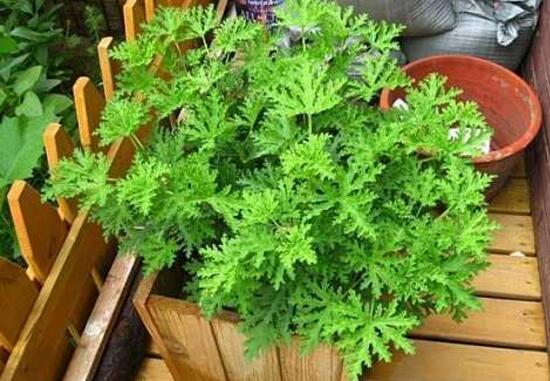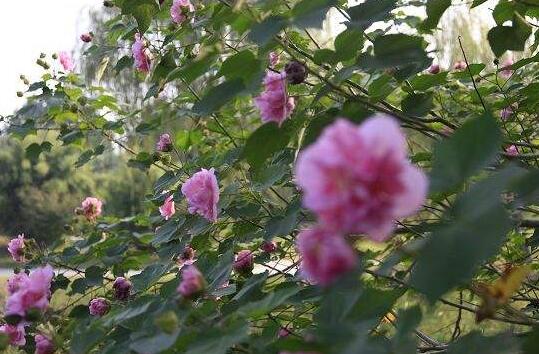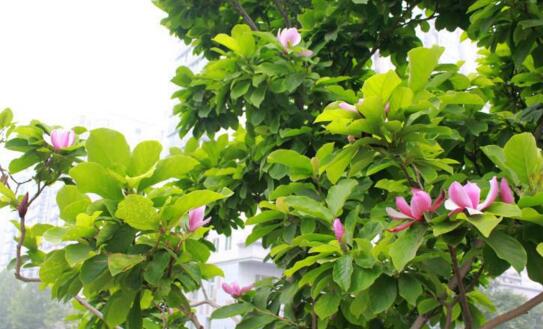How to raise mosquito repellent grass, breeding methods and matters needing attention / high temperature and good effect
In summer, people are always bitten by mosquitoes, often covered with bags. At this time, some people buy mosquito repellent, and some people raise mosquito repellent plants, and mosquito repellent is the most common, it can be bought in the florist, then how to raise mosquito repellent? In this regard, the editor carefully sorted out the breeding methods and matters needing attention of mosquito repellent grass, very detailed, friends who want to raise must have a look.
First, how to cultivate mosquito repellent grass and create an environment

In the summer of mosquito outbreaks, raising a basin of mosquito repellent grass is definitely a good choice, it not only looks beautiful, but also has excellent mosquito repellent effect. As for how to raise mosquito repellent, we need to create the soil, light, water and fertilizer, temperature and so on. The specific requirements are all in the breeding methods and precautions of mosquito repellent. Let's move on.
2. Culture methods and matters needing attention of mosquito repellent grass
1. Soil, slightly acidic
How to raise potted mosquito repellent grass, you must first choose a good soil. According to the growth habits of mosquito repellent grass, if you want to raise it well, you'd better prepare loose and fertile slightly acidic soil. The editor recommends: 6 parts of peat soil, 1.5 parts of vermiculite, 1.5 parts of perlite and 1 part of mixed nutrient soil with coal ash.
Note: in the seedling stage of mosquito repellent grass, it grows very fast, so we need to change the basin frequently. Within 6 months, choose the soil above. After 6 months, the plant has strong adaptability and can use the soil at will. two
2. Light, summer shade
In the cultivation of mosquito repellent, light is very important. It is understood that mosquito repellent grass likes light, and its growth needs sufficient sunshine, and light has a good effect on its development.
Note: mosquito repellent grass likes light, but it is not resistant to strong light, so it is necessary to strengthen shading in summer and sprout indoors.
3. Temperature, 10-25 ℃
How to raise mosquito repellent grass, the temperature must be paid attention to, because the higher the temperature, the stronger the smell of mosquito repellent grass, which can make the mosquito repellent effect better. It can survive the winter safely above 0 ℃, and lemon fragrance can be distributed normally when it is over 15 ℃.
Note: mosquito repellent grows best in 10-25 ℃ environment, and the temperature below 6 ℃ and above 32 ℃ is disadvantageous to growth.
4. Watering, drying and wetting
Watering is a step that must be done to raise plants. To water mosquito repellent grass, we should pay attention to the principle of drying and wetting. To put it simply, it means that the whole basin soil is basically dry before watering, and it should be thoroughly watered, dry and thoroughly, that is, dry and wet alternately. Ps: family cultivation can also apply a small amount of cake fertilizer and rice panning water.
Note: high temperature in summer should be watered less, which is beneficial to the development of root system and improve disease resistance. In addition, water should be watered once after each basin change.
5. Fertilization, once every 15 days
After watering, let's talk about fertilization. After waiting for mosquito repellent grass to slow down for 10 days, we began to apply fertilizer. Spring and autumn is the peak period of plant growth. Water-soluble compound fertilizer 200ppm solution at 20:10:20 and 14:0:14 can be applied every 15 days.
Matters needing attention in the culture of mosquito repellent grass
Although in the above mosquito repellent breeding methods, there are many points for attention, but if you want to raise mosquito repellent grass, there are still many places that flower friends need to pay attention to. To put it simply, there are two more points for attention in mosquito repellent culture: changing pots and diseases and insect pests, as follows:
1. Change the basin
In the mosquito repellent seedling stage, it grows faster, in 6 months, we should frequently change the pot soil. After June, the plant is very adaptable, and the soil in the flowerpot is usually changed once a year, so that mosquito repellent grass will not die because the soil is not nutritious.
2. Insect diseases
Mosquito repellent grass is easy to raise, but once it is not managed properly, it is easy to cause disease root rot or stem and leaf rot, followed by leaf shrinkage, black spots, and then the whole plant shrinks. At this time, we need to find out which kind of diseases and insect pests are caused, and then solve them, which are all described in detail in the pest control of mosquito repellent grass, so I won't say much here.
How to cultivate mosquito repellent grass breeding methods and matters needing attention
Mosquito repellent is a kind of green plant with natural fragrance. It can also purify the air and beautify the environment, but how should this beautiful mosquito repellent be raised? After a while, the editor will write down the breeding methods of mosquito repellent grass, and you can learn it after you have read it.
How to raise mosquito repellent
1. The living habits of mosquito repellent grass
Mosquito repellent grass this kind of plant likes to grow in a mild and refreshing environment. It is afraid of cold in winter and high temperature in summer. It is mostly planted in spring and autumn. In early spring, when the temperature reaches 20 degrees, it can sprout and take root in a month or so. Then plant them in different flowerpots, put them in a cool place to slow bacteria, and then move to the normal environment seven days later.
2. Soil for culturing mosquito repellent grass
Mosquito repellent grass this plant likes acidic soil, usually can choose to hold loose and fertile acidic soil, in the preparation of basin soil to add fertilizer to cultivate soil, at the bottom need to pad some broken hoof as base fertilizer, mosquito repellent grass grows very fast, need to change the basin every year, the best choice is in spring.
3. Temperature and light of mosquito repellent.
Usually, when raising mosquito repellent grass, you should put it in a warm environment, the lowest can not be less than 6 degrees and the highest cannot exceed 32 degrees. It grows fastest in an environment of about 25 degrees. In addition, mosquito repellent grass is a kind of plant that likes dampness and water. Usually, it should be watered once a day, but it can not let the flowerpot accumulate water, which is of great benefit to the rapid growth of the root system. If there is stagnant water, its roots will rot, then it is necessary to clean up the rotten roots in time, otherwise mosquito repellent will die.
How to raise mosquito repellent, breeding methods and matters needing attention of mosquito repellent
Now it has entered summer, and mosquitoes come out whenever summer comes. Mosquito control is one of the important events in summer. Many people will choose to decorate plants with mosquito repellent effect at home. Mosquito repellent is one of the common varieties. Mosquito repellent is currently sold in the market, but how to raise mosquito repellent? What are the breeding methods and matters needing attention of mosquito repellent grass? Please listen to the editor as follows.
Basic information of mosquito repellent
Mosquito repellent grass, also known as mosquito repellent vanilla, transgenic geranium, mainly refers to transgenic geranium, using transgenic technology. The mosquito repellent gene-citronellal gene structure was implanted into "vanilla". Using its own unique release system as a carrier, citronellal substance was released into the air and implanted into the DNA gene structure with fresh odor and air purification to form a "natural evaporator" and the aroma overflow achieved mosquito repellent effect.
Pelargonium is a perennial herb or shrub, up to 1 meter high. The stem is erect, 80ml 90cm high, grayish green, the base is woody, the upper part is fleshy, densely glossy pilose, fragrant, with strong vitality. Leaves with long stalks, broadly cordate-ovoid, 5-7 palmlobes, lobes redivided, lobes serrated at edges; flowers small, densely umbellules opposite leaves, whole plant steamed aromatic oil, often cultivated as aromatic plants. Because of its fragrance, it is often watched in pots. Originally from South Africa.
In fact, there is no mosquito repellent plant, it is only a commercial name, the reason why it is called "mosquito repellent" is for the sake of merchants to sell.
All varieties of geraniums have no mosquito repellent effect, but only artificial transgenic geraniums have this effect.
Breeding methods of mosquito repellent grass
Usually sowing and cutting propagation, cutting is easy to survive in spring and autumn. In early March, the seeds were sown into clean fine sand, 3 cm deep. Water thoroughly 4 hours after insertion, and keep the basin soil moist after that, not too dry or too wet. Put it in a warm and bright place in the room in early spring. It can sprout and root in about 1 month at room temperature of about 20 ℃. Then, the seedlings were raised with Xiaopeng on the ordinary culture soil, and white roots emerged from the pots when the seedlings grew strong. Some broken hooves were padded under the fertilized culture soil as base fertilizer, and then planted in chrysanthemum bucket pots.
Culture methods of mosquito repellent grass
1. Soil
Mosquito net vanilla (mosquito repellent grass) likes neutral and acidic soil and is generally fertilized once every 15-20 days. The mosquito repellent effect is best when the plant height is 30 cm and 40 leaves, and the yellow leaves should be removed at any time. It grows very fast in the seedling stage, so the basin is changed more frequently in the seedling stage. 6 parts of peat soil, 1.5 parts of vermiculite, 1.5 parts of perlite and 1 part of coal ash are used in 6 months. The PH value is slightly acidic and neutral, and the prepared commodity (PH value 5.5-7) can also be purchased from the flower market. After six months, the plant has strong adaptability and can use soil at will. The main stem of the biennial plant is Lignified, which can be trimmed and modeled freely according to personal preferences.
2. Temperature
Mosquito net vanilla (mosquito repellent grass) is the most suitable growth temperature of 10-25 ℃, can safely survive the winter above 0 ℃, and can normally emit lemon fragrance when it is above 15 ℃. The higher the temperature, the stronger the fragrance. Spraying an appropriate amount of water spray to the plant leaves can make citronella aldehyde release continuously, thus making the mosquito repellent effect better.
3. Lighting
Mosquito net vanilla (mosquito repellent grass) likes shade and is not resistant to strong light when growing, especially in summer. It can be planted under trees or in shade. Family potted plants are usually sprouted indoors.
4. Water and fertilizer
Water should be watered once after each basin change, and fertilizer should be applied after slowing down seedlings for 10 days. Spring and Autumn is the peak period of plant growth. 20-10-20 and 14-0-14 water-soluble compound fertilizer 200ppm solution was applied every 15 days. Watering should be based on the principle of humidity between dryness and dryness between studies. High temperature in summer should be less watering and no fertilization, which is beneficial to the development of root system and improve disease resistance. Family cultivation can also apply a small amount of cake fertilizer and rice water and so on.
5. Insect diseases
Root rot or stem and leaf rot caused by improper management, followed by leaf shrinkage, black spots, and then the whole plant atrophied. This is caused by too much humidity, too high temperature, poor ventilation or excessive seedling density. Can be sprayed with fungicides such as carbendazim or carbendazim (800 to 1000 times liquid). But do not spray frequently.
Matters needing attention in the culture of mosquito repellent
The sudden loss of leaves in a short period of time is often due to excessive temperature changes or lack of light. The leaves turn yellow and soon fall off, mostly due to insufficient light and too much watering. This phenomenon can also occur when the temperature is too low in winter.
The dry tip or the edge of the leaf is scorched, sometimes due to excessive light or dry air, and sometimes due to excessive fertilization or dry basin soil. Branches and leaves grow, mainly because there is not enough light, too much nitrogen fertilizer, improper irrigation, should be transferred to the light, pruning branches.
Yellow or brown spots like water stains appear on the leaves, which may be the result of excessive watering and mud spots spattering on the leaves and then exposure.
- Prev

How to trim hibiscus, teach you to master pruning time / method / post-flowering management
Pruning is very important when growing many plants, and hibiscus is no exception. Pruning can not only promote the germination of flower branches and new buds, but also maintain the beauty of plant shape, so every flower friend should learn the correct pruning method.
- Next

What about the yellowing of Magnolia leaves? poor root growth is the main cause / attached solution.
The flowers and colors of purple magnolia are light and elegant, and the branches are green and elegant, so it is always green and vibrant in the pictures of purple magnolia trees, but sometimes we find that the leaves of the purple magnolia planted by ourselves will turn yellow and dry.
Related
- Fuxing push coffee new agricultural production and marketing class: lack of small-scale processing plants
- Jujube rice field leisure farm deep ploughing Yilan for five years to create a space for organic food and play
- Nongyu Farm-A trial of organic papaya for brave women with advanced technology
- Four points for attention in the prevention and control of diseases and insect pests of edible fungi
- How to add nutrient solution to Edible Fungi
- Is there any good way to control edible fungus mites?
- Open Inoculation Technology of Edible Fungi
- Is there any clever way to use fertilizer for edible fungus in winter?
- What agents are used to kill the pathogens of edible fungi in the mushroom shed?
- Rapid drying of Edible Fungi

